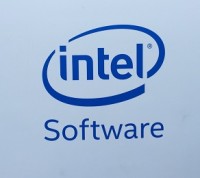LUG 2016 Wrap-up: Intel’s Lustre Line Gains Traction

Intel’s effort to expand Lustre’s beyond science and the Top500 HPC communities, where it has long been strong, and into enterprise and cloud environments was apparent in announcements made at the Lustre User Group Conference (LUG 2016) held in Portland in this week. Among the more significant was Microsoft’s news that the Intel Cloud Edition for Lustre (ICEL) is now available on Microsoft’s Azure platform.
“ICEL is a scalable, parallel file system designed as the working file system for HPC or other IO intensive workloads and built for use with the virtualized compute instances available from Microsoft Azure scalable cloud infrastructure,” wrote Brent Gorda, Intel GM of High Performance Data, who wrapped up most of the Intel news in a blog post yesterday (The Data Stack).
Writing on a separate Microsoft blog last fall, Azure Cloud Architect Arsen Vladimirskiy had noted, “Many HPC and big data workloads are transitioning from on-premises to Microsoft Azure due to increased flexibility and faster time to results. Lustre can be combined with Microsoft Azure compute instances to address a wide array of use cases.”
Several systems builders as well as storage provider Seagate introduced new offering around Intel Enterprise Edition for Lustre (IEEL), again showing broader traction of Lustre. Intel, of course, acquired Lustre specialist Whamcloud in 2012 and has since actively developing the open source software and contributing to the community (see HPCwire article, Intel Expands HPC Collection with Whamcloud Buy). IEEL is Intel’s commercially supported version.
Seagate announced it will incorporate IEEL into its leading ClusterStor storage architecture for high-performance computing (HPC) “Driving the growth of HPC is a key focus for both companies. This focus reflects how we see the data center of the future evolving. Adopting Intel’s distribution will help harmonize efforts, and benefit our customers and the community,” said Ken Claffey, vice president and general manager, Seagate HPC systems business.
Steve Conway, research vice president, High Performance Computing, IDC noted, “Lustre has been very strong in academia and government for some time. As Lustre expands its presence in the private sector, it will continue to evolve to meet a range of commercial needs for HPC simulation and advanced data analytics.” He said he expects the collaborations between Intel various vendors “to accelerate this evolution of Lustre software for use in industrial production computing environments.”
Hewlett Packard Enterprise also Supermicro announced support. The HPE offering, Apollo 4520, was one of several server launches made by HPE last week (see HPCwire article, HPE Expands HPC Lineup; Targets Deep Learning, Lustre, and FS). The 4500 is a dual-node system with high performance fabrics and drive failover.
Bill Mannel, vice president and GM of HPC, Big Data, and IoT at HPE, noted the new Lustre appliance is one of the first fruits of HPE alliance with Intel, formed roughly a year ago and is part of a broader effort to leverage Intel’s new Scalable System Framework. Gorda’s LUG 2016 blog is available at: https://communities.intel.com/community/itpeernetwork/datastack/blog/2016/04/07/latest-intel-news-from-the-lustre-user-group-conference











